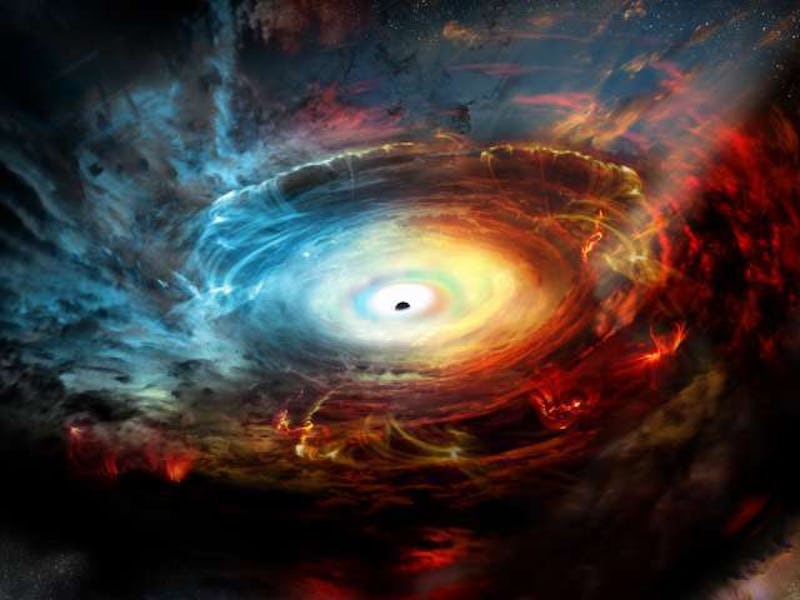Supermassive Black Hole Hides Inside Its Own "Exhaust"
So this is why black holes are so shy.

The galaxy Messier 77 is a lot like our Milky Way. Both are what’s known as barred spiral galaxies, meaning massive groups of stars are arranged in huge arms extending like spirals from the center. And at the center of both galaxies is a supermassive black hole a million or even a billion times more massive than the Sun.
The center of Messier 77 is what’s known as an active galactic nucleus. This means that the accretion disk — the accumulation of cold gas and other matter around the black hole — is the source of much higher than expected emissions from across the entire electromagnetic spectrum. These AGN are hugely useful in searching for ever more distant objects in the cosmos. Some of these AGN are hidden inside thick, donut-shaped clumps of gas known as a torus. Actually, it’s very possible that all AGN have a torus around them, but only some are hidden relative to our Earthbound perspective.
“We know from various observations that some AGN are hidden by colder dust clouds from our point of view on earth,” Jack Gallimore, an astrophysicist at Bucknell University, told Inverse. “The unifying model arose that all AGN are surrounded by a donut of cold gas. If the donut is viewed from the side, we see a ‘Type 2,’ or hidden, AGN. If our view looks down the hole, we see a ‘Type 1’ AGN, that is, we see the accretion disk directly.”
These donuts of cold gas provide a natural cloak for supermassive black holes to hide inside, yet it’s unclear how these naturally unstable clumps of gas remain as they do without changing shape or falling into the black hole.
“Nobody knew how the donut of cold, dust gas, or the torus, stayed puffed up,” said Gallimore. “Cold gas donuts are not stable: They should collapse to a flattened disk.”
We’re so used to thinking about black holes as gobbling up any matter that gets too close that it’s more than a little surprising to hear the answer Gallimore and his fellow researchers have found: The black holes themselves fling matter from their accretion disks back out toward the gas donut, like an engine giving off exhaust.
Gallimore and fellow researchers used the Atacama Large Millimeter/submillimeter Array (ALMA) in South America to detect clouds of carbon monoxide pulling away from the outer portion of the accretion disk around the Messier 77 black hole. The energies of the superheated inner accretion disk created magnetic fields that were then in turn able to accelerate these clouds to speeds much faster than would normally be expected — say from a normal top speed of 100 kilometers per second to a whopping 400. That’s quite a bit faster than the disk’s normal rotational speed, which lets the gases escape the disk and move further away from the black hole.
“We’re learning more about the accretion disk and how the accretion disk feeds the black hole,” Gallimore told Inverse, saying evidence of this feedback from black hole and its accretion disk to the rest of the galaxy could mean the black hole plays a more active role in the galaxy’s development than we thought. “We will also learn something about how the black hole might feedback to the host galaxy and affect its evolution, although we’re not there yet with this particular project.”
While this latest research has revealed the interactions between black hole, accretion disk, and surrounding gas torus, Gallimore is optimistic that more study from the telescope in Atacama will reveal still more surprises about the complicated lives of black holes.
“Stay tuned to ALMA,” he said. “There are many researchers pursuing this question about NGC 1068 and other AGNs. Looking at the molecular, cooler gas is going to reveal surprises.”